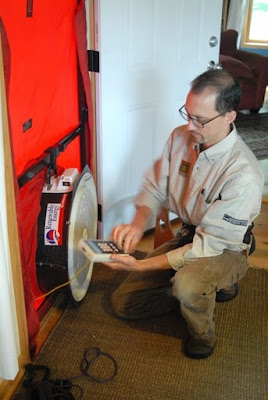One day, I went to get my hair done at a popular “upper scale” salon that shall remain nameless for the purposes of this blog (If you ask me in person, I’ll tell you all about it).
I looked great. She cut my hair the exact length, she offered the perfect amount of pointless conversation to take my attention off her strangely applied eyeliner, and I walked up to the counter feeling spiffed up and ready for the rest of my day.
She, extending the camaraderie (or so I thought), walked with me, chatted with the cheery receptionist, and commenced to pull bottles off the shelves. She placed them in front of me, “you’re gonna’ love how easy this style is to maintain.” She waved at the clerk and bounced off to her next victim client.
And there I stood; buying bottles of junk I didn’t want.
I walked to my car, convincing myself I had not just been duped, but I knew better. She employed a tactic that worked on me, and probably a lot of other people as well.
You know the one. It’s the one where the customer unwittingly buys a bunch of stuff they didn't plan on buying.
Last week, I was talking to another contractor who had recently lost a bid to a competitor. The competitor bid low and planned to make up the difference in change orders. It’s sad to say, but this is a standard practice for many builders. Unfortunately, clients don’t talk about it much, because no one likes to admit they feel cheated.
After I got my hair cut, my friends all complimented me. Do you think I told them the truth about my experience? No way. I told them the name of the stylist and pretended like her up-sale at the end of the transaction was normal.
But it wasn’t. And it didn’t have to be.
If she wanted to style my hair in a way so I would have to buy bottles of goo, she should have told me, and I would have probably been on board – maybe even excited about the change. I definitely would not be writing this blog.
The fact is every sales transaction involves a level of trust. I will not return to that stylist. Not because my bill was too much, but because of the surprise at the end of the process. In essence, no matter how good the cut was, I do not trust her to work in my best interest.
So what about contractors who work with this surprise at the end philosophy, and do so successfully? Why do they get away with it? Why do people still use that styling salon?
It goes back to not wanting to be the person who was taken advantage of.
As contractors, this is frustrating. We are professional, we know how much something costs, and to have another “professional” under-bid to get the homeowner to sign the bottom line is just plain dishonest. But, there is little we as contractors can do about it.
However, there is a lot you, as a customer, can do.
The builder wants you to trust them. Make them earn it. Call their references, and keep in mind, like me not telling my friends about how I was duped, people do not want to think they have been taken advantage of. They probably won’t admit it if they went with the lowest bid and their finished project cost them more than the highest bid. Ask specific questions that go beyond if they liked their experience. Questions like:
-How many change orders were there in total?
-What was the dollar amount of change orders?
-What was the reason for the change orders?
-How much did you spend on your home outside of your construction loan?
-Were the contractor’s allowances realistic for your goals?
-Did your appliances go over your allowance?
-Did your flooring go over your allowance?
-Did your landscape go over your allowance?
-Did your lighting selections stay within the allowance?
-Was the decorating and painting budget sufficient?
-Did you feel like you had the option to reject change orders, or did you feel forced into them?
-After you reflected on the allowances you were given, did you feel like they met your original expectations?
A $50.00 haircut is not exactly what I would call low cost, but it still was a lot less than I ended up paying for the privilege of the experience.
How much will you pay for your experience? Has your builder earned your trust?
We pride ourselves on our honest approach, and yes, sometimes our numbers might sound a bit high. That’s because we will bid what you ask for and nothing less. If you want an expensive faucet, you will find it in your bid, and not buried in an allowance that does not get close enough to paying for it. On the flip side, if it turns out to be more than you wanted to spend, we will help you trim your budget in a way that will not come back to bite you in the end.
Working with unrealistic allowances cheats the homeowner, the builder, and everyone involved. At Degnan Design Builders, we design to your budget. That means you have to power to control your costs, and can be assured we will not suddenly raise prices at the end of the transaction and leave you walking to your car, wondering what just happened, and why your $50.00 haircut turned into a $100.00 experience.
Oh, and ask me for the name of my new stylist…she’s fantastic.
By: Cara Luecht - Office Manager
 First, before you do anything, think about having an energy efficiency test to see where your biggest challenges are.
First, before you do anything, think about having an energy efficiency test to see where your biggest challenges are.




